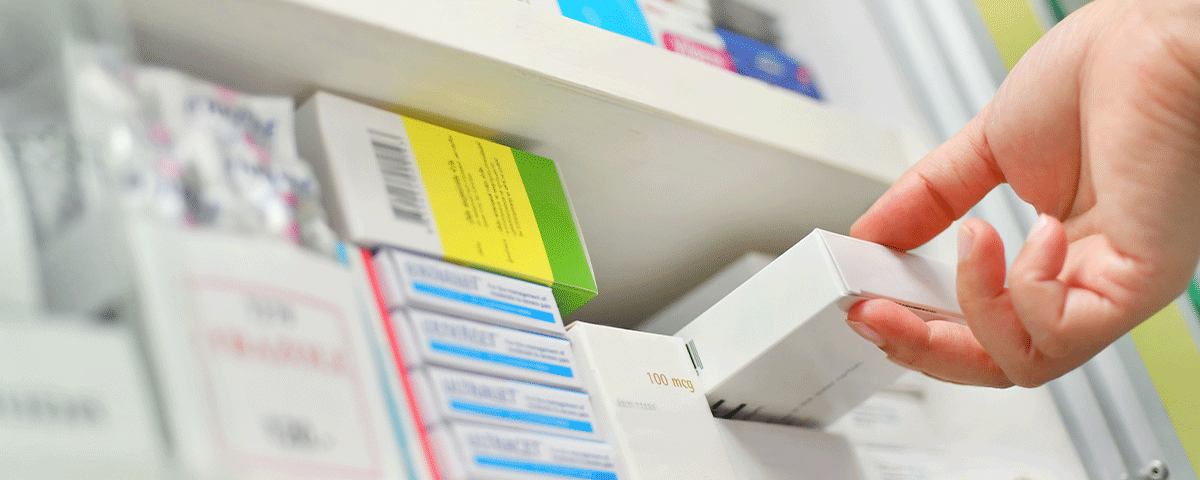Over-the-counter (OTC) drug abuse is more common than you may think.
It’s normal to think of street drugs when you talk about drug addiction, but legal medicines are actually the most commonly abused in the United States. While medications like over-the-counter drugs can help us and heal many ailments, they can also be addictive when used the wrong way. Our substance abuse treatment center in Stuart, FL, is sharing more about addictive OTC drugs and what makes them so addictive.
What Are Over-the-Counter Drugs?
Over-the-counter drugs are medications that you can buy at drugstores, supermarkets, or gas stations without a prescription. OTC medications are usually safe when taken as recommended or directed. Similar to illegal or prescription drugs, OTC drugs also have a potential for abuse. While less potent than drugs like opioids or cocaine, OTC medications still pose a risk for addiction.
Some common over-the-counter drugs include:
- Pain relievers such as acetaminophen (Tylenol) and ibuprofen (Advil, Motrin)
- Cough medicines containing dextromethorphan or DXM (Mucinex, Delsym)
- Antihistamines containing loratadine (Claritin 24Hr, Zyrtec)
- Cold medicines containing pseudoephedrine (Sudafed, Robitussin)
- Motion sickness pills containing dimenhydrinate (Dramamine, Gravol)
Although these medications are available without prescriptions, it doesn’t mean they’re entirely safe. Cough syrups are often mixed with other drugs and sodas or alcoholic drinks to create a drink called “lean drank.” When used like this or taken in higher doses than recommended, OTC drugs can produce a sedative high. Repeated abuse of OTC medications can also lead to physical dependence and addiction. If someone you know has developed an OTC drug addiction, our medically assisted detox treatment can help.
Why Are Over-the-Counter Drugs Often Abused?
Over-the-counter drugs are often abused because they can produce a high similar to other drugs of abuse. Over-the-counter drugs that get you high are any that contain dextromethorphan (DXM), pseudoephedrine, or dimenhydrinate. Because OTC drugs are easily obtainable and don’t require a prescription to purchase, there’s no way to monitor how much of these drugs people use.
OTC drug abuse has also become common in the party and clubbing atmosphere. Also known as Purple Drank, Sizzurp, and Dirty Sprite, lean is an illicit substance made with codeine, cough syrup, soda, and hard candy. Codeine is an addictive and potent opioid that can produce euphoria and sedation. Over-the-counter drugs like DXM are often mixed with other substances to enhance side effects and produce a more intense high. Unfortunately, doing this only further increases users’ risks of developing addiction and needing inpatient drug treatment to get sober.
Side Effects of OTC Drugs That Get You High
The most addictive OTC drugs are dextromethorphan (DXM), pseudoephedrine, and dimenhydrinate. Each drug acts on the brain differently to produce various side effects. Either can be dangerous when taken in high doses. If frequently abused or misused, they can also lead to physical dependence and addiction.
Dextromethorphan (DXM)
Dextromethorphan is a cough suppressant that’s also classified as a sedative and dissociative drug with stimulant properties (in lower doses). In higher doses, it can produce similar side effects to drugs like PCP and ketamine. As a sedative, DXM can depress the central nervous system as well as functions like breathing and heart rate. However, as a dissociative drug, it can also cause hallucinations and “out-of-body” sensations.
Some other common side effects of DXM include:
- Euphoria and sedation
- Dizziness or drowsiness
- Sleepiness
- Lightheadedness
- Nervousness or anxiety
- Restlessness
- Nausea and vomiting
- Stomach problems
- Diarrhea or constipation
- Difficulties breathing
- Hypoxia
- Blackouts
- Vision problems
- Hallucinations
- Rashes
- Agitation
Certain DXM side effects occur when you take certain doses. Below is a list of DXM effects by dose.
- 100 to 200 mg of DXM: Euphoria and restlessness.
- 200 to 500 mg of DXM: Intense auditory or visual sensations, psychedelic effects, dizziness, lack of coordination, and hallucinations.
- 500 to 1,000 mg: Visual and auditory hallucinations or disturbances, altered state of consciousness, delayed reflexes or reaction times, mania, panic and paranoia, and partial dissociation from reality.
- Over 1,000 mg: Psychotic symptoms, complete dissociation, and impaired balance and physical coordination.
Pseudoephedrine
Pseudoephedrine is a stimulant and active ingredient of many cold medicines. It’s used to alleviate nasal and sinus congestion from colds or allergies. However, as with DXM, pseudoephedrine can also produce a high after certain doses. Because pseudoephedrine is a stimulant, it stimulates activity in the brain and spinal cord, unlike sedatives. This can create an energetic and euphoric high. Other common side effects of pseudoephedrine include:
- Fast or uneven heartbeat
- Severe dizziness
- Anxiety or nervousness
- Easy bruising and bleeding
- Unusual weakness or fatigue
- Flu or cold-like symptoms such as fever, chills, and body aches
- High blood pressure (can lead to blurred vision, ear ringing, chest pains, and trouble breathing)
- Confusion
- Seizure
- Loss of appetite
- Tingling or redness under the skin
- Restlessness or alertness
- Trouble sleeping (insomnia)
- Skin rash or itching
A normal dose of pseudoephedrine for adults and kids 12 years or older is 60 milligrams (mg) every 4 to 6 hours. Ingesting a higher dose or taking it more frequently than directed can lead to a high. Pseudoephedrine is also a common ingredient in illicit drugs like methamphetamine, meaning it’s potent enough to act as a cutting agent in street drugs.
Dimenhydrinate
Dimenhydrinate is a common ingredient in motion sickness pills, which can, of course, treat motion sickness, dizziness, and vertigo. When taken in high doses (between 200 to 1,200 mg), it can create a high marked by side effects like:
- Drowsiness
- Excitement or increased activity
- Headache
- Dizziness
- Blurred vision
- Ringing in the ears
- Dry mouth, nose, or throat
- Lack of coordination
- Fainting
- Dizziness
- Nausea and vomiting
- Irregular heartbeat
Dimenhydrinate is commonly abused for its psychedelic properties, but people who take it in high doses also run the risk of coma and even death.
Learning to spot the signs of OTC drug addiction and withdrawal is important. If you recognize symptoms like confusion, irritability, anxiety, mood swings, and trouble breathing in your loved one, they may have a drug problem. Because commonly abused OTC drugs are available without a prescription, it can be difficult to spot when someone is misusing them. Not everyone realizes how dangerous they can be, and so many loved ones with OTC drug addiction don’t know the signs of a growing problem.
If you’re abusing drugs despite the consequences or spending an excessive amount of money to purchase drugs, then you need help. Banyan Treatment Centers Stuart offers a variety of addiction services that can guide you or a loved one to sobriety. Call us today at 888-280-4763 to speak to a team member about our Florida drug and alcohol treatment.
Related Readings:









